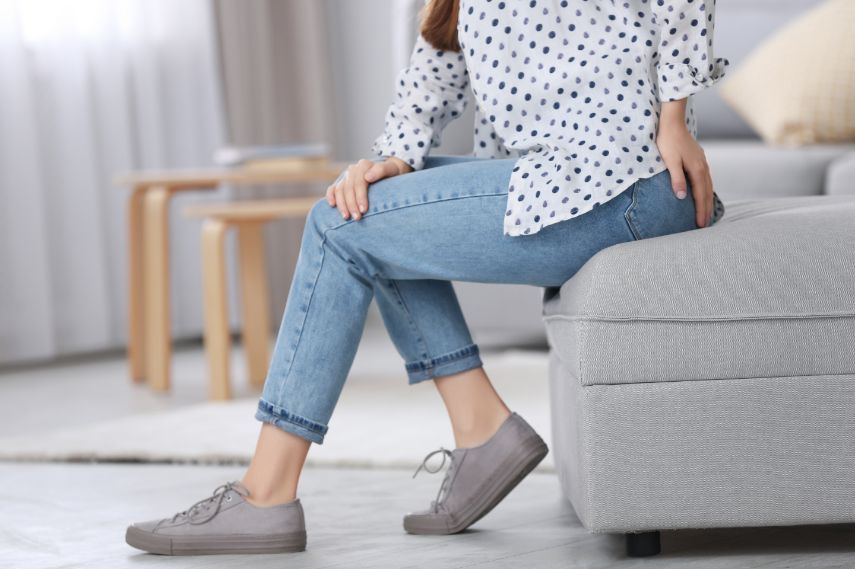Anal Fistula Treatment in Dubai, Abu Dhabi and Al Ain
Anal fistula is an abnormal tunnel between the anal canal and the skin. It is caused by an abscess from the mucous glands adjacent to the anus. These glands naturally exist around the anus and secrete mucous fluid to facilitate the bowel movement;however, the openings of these glands are blocked sometimes as a result of constipation, inflammation or any other reason, which leads to the accumulation of secretions inside, causing the abscess, which leads to the formation of anal fistula.

SYMPTOMS OF ANAL FISTULA
Frequent complaint of anal abscess recurrence despite treatment.
- Pain in the anus area that increases with defecation and usually the pain is like reflux due to the presence of internal pus.
- Swelling of the anal area.
- Drops of blood with stool.
- Blood or pus leakage from an abnormal opening in the anus, and it may be associated with pain relief.
- Dermatitis of the anal area as a result of persistent pus discharge.
CAUSES OF ANAL FISTULA
- Tuberculosis
- Cancer
- Crohn’s disease.
- Sexually transmitted diseases such as syphilis.
- Trauma
Diagnosis
Clinical examination: the first stage in the diagnosis and through which the doctor examines the anal area and its surroundings to look for an abnormal opening on the surface of the skin.

Anal endoscope: sometimes the opening of the fistula is not visible, requiring an endoscope to scan the anal canal from the inside to locate the fistula.
Diagnosis of related diseases: this is the next stage after confirming the diagnosis of anal fistula where the doctor resort to blood tests, imaging, and colonoscopy to discover other possible diseases that are associated with anal fistula.
Anal Fistula Treatment
The surgical treatment is the only option available to treat anal fistula. There is a number of different procedures, and the best option depends on the position of the fistula. Treatment aims to heal the fistula without damaging the sphincter muscles.
- If the fistula is not too close to the anus, the doctor can cut open the skin and muscles surrounding the tunnel allowing the opening to heal from the inside out.
- For complicated cases of fistula, the doctor might insert a tube called a seton into the opening to drain the pus and fluids before performing the surgery.
- In some cases, the doctor may have to cut into the sphincter muscle that open and close the anus, which might make it harder to control the bowels after the procedure.
This surgery involves making a cut along the fistula to open it up to heal as a flat scar. This procedure is suitable when the fistuladoesn’t pass through a significant portion of sphincter muscles.
If the fistula passes deep through anal sphincter muscle, the surgeon may recommend seton procedure.A seton is a surgical thread that’s placed in the fistula to help drain the pus without the cutting the sphincter muscles.
This procedure involves creating a flap form the rectal wall before removing the fistula.Then the flapis used to cover the repair.
The ligation of the intersphincteric fistula tract procedure is used to treat fistulas that pass through the anal sphincter muscles.During the treatment, a cut is made in the skin above the fistula and the sphincter muscles are moved apart. The fistula is then sealed at both ends and cut open, so it lies flat.
In this procedure, an endoscope is put in the fistula.An electrode is then passed through the endoscope and used to seal the fistula.
This procedure involves injecting a special glue made from fibrous proteinto seal up and heal a fistula instead of cutting it open. Fibrin glue is injected through the external opening after clearing the tract and closing the internal opening.
Post-procedure
- Patients need to rest a few days after the operation before resuming their daily activities.
- Patients should change the bandages regularly until the wound is fully healed.
- Eating high-fiber foods, such as vegetables, fruits, and whole grains can make it easier to pass stool without causing complications in the anal canal.
- You may use laxatives prescribed by your doctor to avoid constipation during the recovery period.
To book a consultation with our specialist proctologist or for more information about Anal Fistula Treatments, call us toll-free on 800 (NOVO) 6686 or click the live chat icon at the bottom of the screen.
